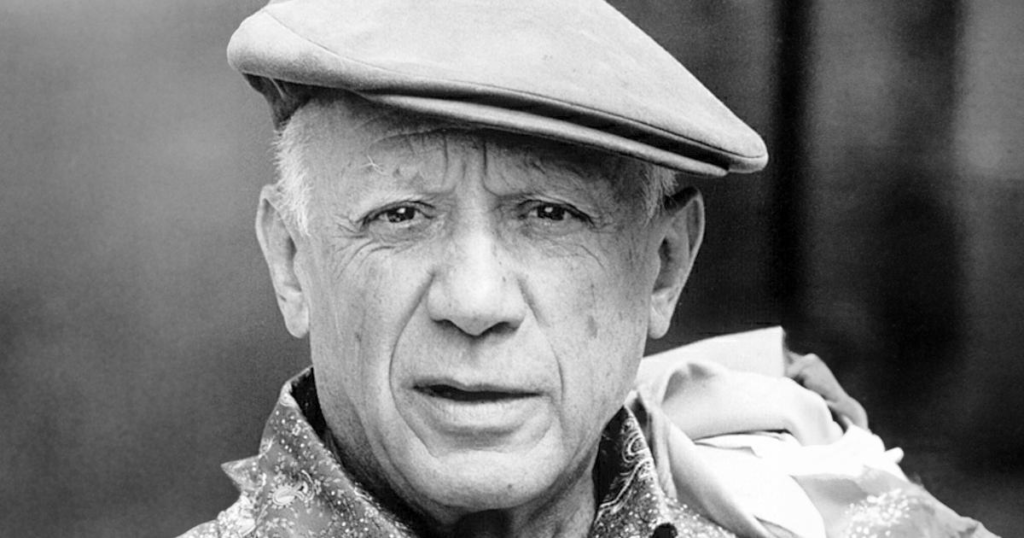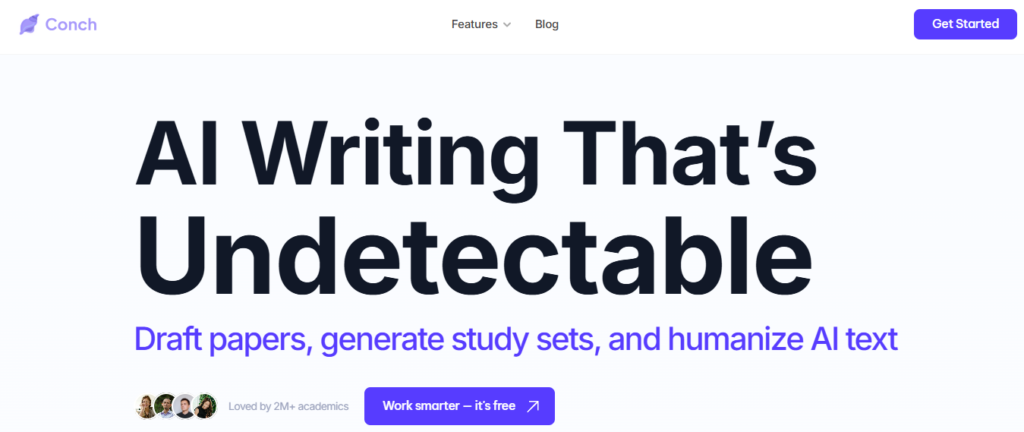Imagine you’re a student with dyslexia, and you’ve been assigned a research paper. You might be feeling overwhelmed, and your first instinct might be to avoid the task altogether. This is understandable, as writing doesn’t come easily to you, and you’re likely concerned about how your disability will affect your performance.
But what if there was a way to make writing a paper easier? What if you could leverage technology to help you organize your ideas and communicate effectively? In this guide, we’ll provide examples of dyslexia writing and how to use AI to write a paper.
One solution to help with writing is Conch AI’s AI writing tool. This AI writing assistant helps individuals with dyslexia organize their thoughts and improve writing clarity so that they can communicate their ideas with confidence.
10 Dyslexia Writing Examples

1. Letter Swaps in Words
When writing, some individuals with dyslexia swap letters that look alike. This may include mixing up ‘p’ and ‘q,’ or ‘m and ‘n’. For example, writing “quiet” as “puiet” shows how similar shapes confuse letter recognition and placement.
2. Sound-Based Misspellings
People with dyslexia often spell words how they sound. For instance, writing “trean” instead of “train” demonstrates reliance on phonetics rather than memorized spelling patterns, revealing the struggle to recall exact letter sequences.
3. Dropping Middle Letters
Words may be missing internal letters, especially in longer or complex words. An example is “definitely” instead of “definitely”, reflecting difficulty in maintaining the whole sequence of sounds within a word.
4. Extra Letters Added
Sometimes extra letters sneak in, especially with double consonants. For example, writing “lettter” in place of “letter” shows overcompensation or uncertainty about the number of repeated letters.
5. Mixed-Up Word Positions
Sentence structure can be affected, leading to awkward word orders like “She quickly caught the ball” instead of “She quickly caught the ball.” This shows challenges in syntax and placing modifiers and verbs in their correct positions.
6. Confusion Between Homophones
Words that sound identical but have different spellings often get confused. For example, writing “I no where she is” instead of “I know where she is” reveals difficulties distinguishing homophones based on meaning and spelling.
7. Random Capital Letters
Capitalization rules can be inconsistently applied, such as “Today I Went To The Park” with unnecessary capitals on small words. This inconsistency often arises when cognitive focus is heavily directed toward spelling and word retrieval.
8. Sentences Merging Without Breaks
Writing like “I woke up, ate breakfast went to school” combines several thoughts without punctuation. This reflects trouble recognizing where sentences start and end and difficulty applying appropriate pauses in writing.
9. Overlapping or Irregular Spacing
There may be uneven spacing between words or letters, such as “Mybook isfun” instead of “My book is fun.” Visual processing issues can make differentiating word boundaries difficult.
10. Letter Reversal in Words
Reversing the order of letters within a word is common, for example, “slate” written as “stale” or “form” written as “from.” This occurs because of challenges in sequencing letters correctly during writing.
What is Dyslexia?

Dyslexia is a specific learning difference that mainly impacts an individual’s ability to read and write. It is not connected to a person’s intelligence or their access to education. Instead, dyslexia originates from how the brain processes language, making specific tasks involving words more difficult.
People with dyslexia often find it challenging to break down words into their sounds, known as phonemes. This skill is essential for reading and spelling. Because of this difficulty, reading becomes slow and tiring, and spelling mistakes are frequent, even with words that are commonly used.
Common Signs of Dyslexia
Phonological Processing Issues
There is trouble distinguishing and working with the smallest sounds in language.
Decoding Difficulties
Problems linking letters to the sounds they represent, making it hard to sound out words.
Slow Reading Pace
Reading can feel like a slow, demanding effort rather than an automatic skill.
Spelling Errors
Persistent misspellings, which can happen despite practice.
Writing Struggles
Challenges in getting thoughts down clearly on paper, with errors in grammar, punctuation, and organizing ideas.
Dyslexia is a brain-based condition, meaning the way the brain interprets and manages language signals is different from those without dyslexia. This neurological difference requires tailored approaches in learning and teaching to help those affected thrive.
Advances in technology have introduced powerful resources that aid learners with dyslexia. AI tools like Conch AI are designed to support students by making reading and writing tasks more manageable. These tools can assist with reading comprehension, spelling correction, and organizing written ideas, providing personalized help that adapts to each student’s unique needs. By leveraging AI, learners with dyslexia can build confidence and improve their skills more effectively.
Join Over 2 Million Students and Ace your Classes with our AI Writing Tool
Join millions of students to write papers and ace exams with Conch AI’s AI writing tool. We built this tool because we were tired of spending endless hours on citations, study guides, and rewrites. Unlike general AI tools, Conch understands what students need – instant citations that professors accept, stealth writing that bypasses detection, and study tools that help you learn the material.
Our Chrome extension brings these superpowers right to your research workflow, while our lecture recording feature takes notes for you so you can focus on understanding concepts. Try our free plan today and see why students tell us they’re saving 10+ hours a week with Conch AI. When you’re ready for unlimited access, our Limitless Plan gives you everything you need to transform your academic experience. Join over 2 million students and ace your classes with our AI writing tool!
Related Reading
- How to Calculate H Index
- How to Write an Informative Essay
- Technology Essay
- How to Write a Header for an Essay
- How to Write a Biography Essay
- How to Write a Reflection Paper
- How to Write an Encyclopedia Entry
- Speech Analysis Example
- What is a Good H Index
Does Dyslexia Affect Writing?

Yes, dyslexia can influence the way a person writes, making specific writing tasks more difficult. However, it does not prevent someone from becoming a skilled and effective writer. People with dyslexia often face challenges with spelling, grammar, and organizing their ideas coherently on paper. With appropriate support and strategies, these difficulties can be managed and writing abilities improved.
What Does Writing Look Like With Dyslexia?
Writing by individuals with dyslexia often displays distinct characteristics, such as:
- Inconsistent Spelling, even for common words.
- Reversed letters, such as confusing b and d or p and q, or swapping the order of letters within words.
- Omissions or additions of letters in words.
- Irregular spacing between words or letters.
- Mixing uppercase and lowercase letters inappropriately.
- Difficulty arranging thoughts logically in writing.
- Incomplete sentences or missing words.
- Having strong ideas but struggling to express them effectively on paper.
How Can You Identify Dyslexia Through Writing?
Some indicators that might suggest dyslexia when looking at writing samples include:
- Frequent spelling mistakes, even with words the person uses often.
- Inconsistent spelling of the same word within the exact text.
- Writing words as they sound, producing phonetic spellings like “wuz” instead of “was.”
- Confusions with homophones such as their and there or to, too, and two.
- Problems with punctuation and proper capitalization.
- Avoidance or anxiety related to writing tasks.
- A noticeable gap between fluent verbal skills and difficulty in written expression.
How Does Dyslexia Manifest in Writing?
The ways dyslexia often shows up in writing include:
- Disorganized presentation of ideas on paper.
- Struggling to begin writing or figure out what to write.
- Writing slower than peers, taking longer to complete tasks.
- Handwriting that may be messy, sometimes related to an unusual pencil grip.
- Challenges in accurately copying text.
- Difficulty reviewing and correcting their writing.
- Using less varied vocabulary when writing as compared to speaking.
- Frequent errors in grammar and sentence structure.
Related Reading
- Essay on Respect
- Essay About Bullying
- Why I Deserve This Scholarship Essay
- Is Census Data Primary or Secondary
- Is a Documentary a Primary Source
- Are Textbooks Primary Sources
- Essay About Death
- How to Write a 4 Paragraph Essay
- Finance Research Paper Writing
Famous People Who Thrived Despite Having Dyslexia
1. Albert Einstein

Dyslexia didn’t prevent Albert Einstein from becoming one of the most brilliant people in human history. While he wasn’t diagnosed with dyslexia, many of his symptoms mirror those of the learning difference. For instance, Einstein had difficulty with reading and language early in life. He even endured a slow start in school. However, he went on to revolutionize modern physics. His profound visual thinking and ability to conceptualize complex ideas visually are traits often linked to dyslexia, helping him develop groundbreaking theories that changed our understanding of the universe.
2. Leonardo da Vinci

Historical evidence suggests Leonardo da Vinci showed signs of dyslexia, such as his famous mirror writing and exceptional spatial intelligence. Da Vinci’s ability to think outside conventional linear frameworks contributed to his diverse talents as an inventor, artist, and scientist. He was a true polymath whose interests and skills spanned numerous disciplines. Da Vinci’s dyslexia may have played a role in his extraordinary ability to visualize complex problems and devise innovative solutions, many of which were created centuries ahead of their time.
3. Steven Spielberg

Diagnosed with dyslexia in his fifties, legendary filmmaker Steven Spielberg has revealed how the learning difference shaped his storytelling and filmmaking. His capacity for visualizing scenes and narratives fueled some of the most iconic movies in cinematic history. Dyslexia didn’t stop Spielberg. It inspired him to embrace alternative methods of learning and storytelling, helping him create the fantastical worlds depicted in blockbuster films like E.T., Jurassic Park, and Jaws.
4. Whoopi Goldberg

Goldberg has publicly discussed her experiences with dyslexia, emphasizing how it shaped her education and career. She struggled with a learning difference throughout school, leading her to feel isolated and alone. But once Goldberg discovered her passion for the performing arts, her dyslexia no longer hindered her success. She believes her creativity developed in part due to her dyslexia. Today, Goldberg is a versatile entertainer and advocate for alternative learning methods. She encourages others to embrace different ways of thinking.
5. Pablo Picasso

Picasso’s innovative and often abstract art style reflects a non-linear perspective commonly associated with dyslexia. His ability to see the world from multiple angles changed the face of modern art. He could depict his subjects from different perspectives simultaneously, creating a new visual language that would come to be known as Cubism. Picasso’s work laid the foundation for numerous artistic movements that followed, and his unique approach to creativity has inspired generations of artists.
6. John Lennon

Lennon’s reported struggles with reading and writing contrasted with his brilliant lyricism and creative genius. He famously flunked out of school and struggled with dyslexia throughout his life. His dyslexia may have played a role in his unique approach to songwriting and expression. Instead of focusing on musical notation and structured methods of creating songs, Lennon preferred to free his creativity from traditional constraints. His innovative techniques and alternative methods of composing music helped him make some of the most beloved songs in history.
7. Richard Branson

Branson attributes part of his success to the unique problem-solving skills he developed in response to dyslexia. The unconventional thinking that came from his learning difference helped him build the Virgin empire, spanning numerous industries. Branson’s creativity and ability to visualize and execute complex ideas have made him a billionaire and one of the most famous entrepreneurs in the world.
8. Muhammad Ali

Despite his dyslexia, Muhammad Ali became a world-renowned boxing champion and a powerful speaker whose charisma and creative language captivated millions. Ali’s dyslexia didn’t stop him from excelling in school or developing into one of the greatest fighters in history. His talent for rhyming and wordplay helped him create a distinct persona that entertained fans and infuriated his opponents. Ali’s ability to shine both in and out of the boxing ring has inspired countless people, and he remains an important figure in American history.
9. Tom Cruise

After struggling with dyslexia for years, Tom Cruise openly shares his journey overcoming the learning difference through determination and adaptive learning techniques. He exemplifies resilience and commitment. The Hollywood superstar has improved his reading skills significantly and continues to use alternative methods to tackle challenging scripts and prepare for his roles. Today, Cruise is one of the highest-paid actors in the world and has starred in dozens of blockbuster films.
Join Over 2 Million Students and Ace your Classes with our AI Writing Tool
Join millions of students to write papers and ace exams with Conch AI’s AI writing tool. We built this tool because we were tired of spending endless hours on citations, study guides, and rewrites. Unlike general AI tools, Conch understands what students need – instant citations that professors accept, stealth writing that bypasses detection, and study tools that help you learn the material.
Our Chrome extension brings these superpowers right to your research workflow, while our lecture recording feature takes notes for you so you can focus on understanding concepts. Try our free plan today and see why students tell us they’re saving 10+ hours a week with Conch AI. When you’re ready for unlimited access, our Limitless Plan gives you everything you need to transform your academic experience. Join over 2 million students and ace your classes with our AI writing tool!
Practical Strategies to Improve Writing for Individuals With Dyslexia

1. Using Assistive Technology
Incorporate tools like text-to-speech software, spell-checkers, and voice recognition programs. These technologies help reduce the writing burden by converting speech to text and catching spelling errors, enabling clearer expression of ideas without being hindered by transcription difficulties.
Additionally, AI writing assistants like Conch AI can further enhance writing efficiency by offering features such as draft generation, grammar checking, and style suggestions tailored to individual needs.
2. Organize Thoughts Visually
Before writing, create outlines, mind maps, or graphic organizers to arrange ideas logically. Visual frameworks assist in structuring content, offering a clear roadmap that guides the writing process and improves coherence.
3. Apply Multisensory Techniques
Engage multiple senses during writing. Say words aloud while writing or use tactile methods such as writing in sand or on textured surfaces. These approaches reinforce learning by linking sounds, movements, and touch, aiding memory and spelling.
4. Break Writing into Manageable Steps
Divide the writing task into smaller, focused phases, such as brainstorming ideas, structuring them, drafting sentences, and finally editing. Concentrating on one aspect at a time reduces cognitive overload and makes the process less daunting.
5. Allow Extra Time
Recognize that writing may take longer for individuals with dyslexia, so allocate sufficient time for each stage. This pacing helps reduce stress and encourages thorough development and revision of the work.
6. Use Color-Coding Techniques
Highlight different parts of speech, sentence elements, or stages of writing using colors. This visual distinction helps clarify language structure and organization, making complex writing tasks more manageable.
7. Practice Consistently
Encourage regular writing practice through journals or varied writing prompts. Continuous engagement helps build familiarity and skills progressively, improving fluency and confidence.
8. Seek Specialized Support
Collaborate with tutors, learning specialists, or educators experienced in dyslexia. Personalized guidance can target particular challenges and reinforce effective strategies tailored to individual needs.
9. Utilize Writing Templates
Employ pre-made structures or graphic organizers designed for specific types of writing, such as essays or reports. Templates provide a scaffold that supports organization and content development, reducing the stress of starting from scratch.
10. Focus on Strengths Before Accuracy
Initially prioritize idea generation, expression, and content development over perfect spelling and grammar. Once ideas are fully formed, editing for mechanics can follow. This approach encourages creativity and reduces frustration.
Related Reading
- Ai Annotated Bibliography
- Leadership Essay Examples
- Social Media Argumentative Essay Topics
- Topic Sentence vs Thesis Statement
- Evaluation Essay Examples
- National Honor Society Essay Examples
- Proposal Essay Examples
- Diversity Essay Examples
- Literary Analysis Essay Examples
- Informative Essay Topics
Join Over 2 Million Students and Ace your Classes with our AI Writing Tool

Managing academic writing tasks can be stressful, especially if you struggle with dyslexia. Writing with dyslexia takes extra time and effort. It may be challenging to express your ideas in writing and organize your thoughts on paper. AI writing tools like Conch can help you with these tasks. For example, Conch can generate instant study guides and help you rewrite passages in more accessible language to improve understanding. The more you use AI tools, the easier academic writing will become.

Leave a Reply